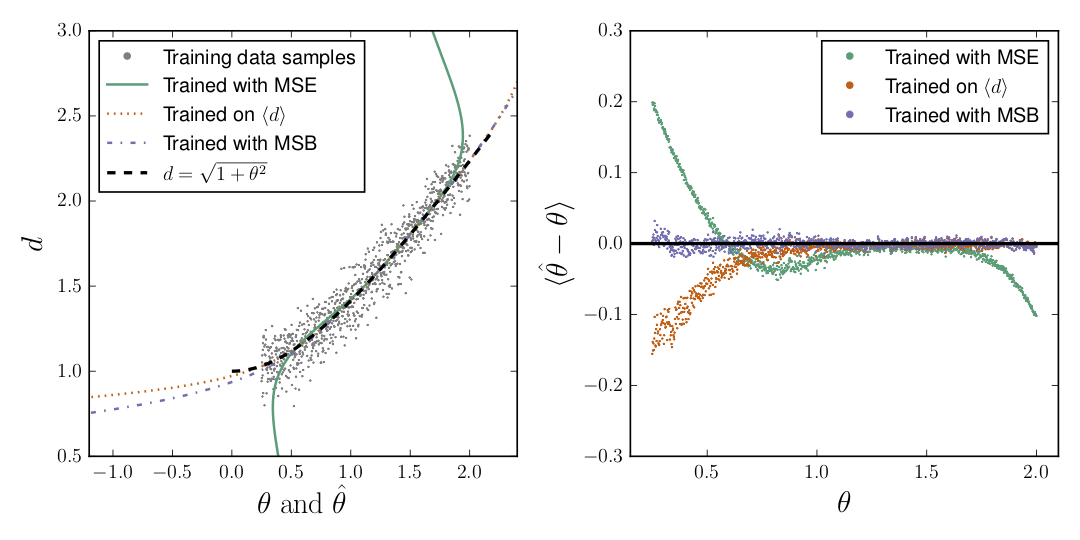Weak-lensing shear measurement with machine learning: teaching artificial neural networks about feature noise
Cosmic shear is a primary cosmological probe for several present and upcoming surveys investigating dark matter and dark energy, such as Euclid or WFIRST. The probe requires an extremely accurate measurement of the shapes of millions of galaxies based on imaging data. Crucially, the shear measurement must address and compensate for a range of interwoven nuisance effects related to the instrument optics and detector, noise, unknown galaxy morphologies, colors, blending of sources, and selection effects. This paper explores the use of supervised machine learning (ML) as a tool to solve this inverse problem. We present a simple architecture that learns to regress shear point estimates and weights via shallow artificial neural networks. The networks are trained on simulations of the forward observing process, and take combinations of moments of the galaxy images as inputs. A challenging peculiarity of this ML application is the combination of the noisiness of the input features and the requirements on the accuracy of the inverse regression. To address this issue, the proposed training algorithm minimizes bias over multiple realizations of individual source galaxies, reducing the sensitivity to properties of the overall sample of source galaxies. Importantly, an observational selection function of these source galaxies can be straightforwardly taken into account via the weights. We first introduce key aspects of our approach using toy-model simulations, and then demonstrate its potential on images mimicking Euclid data. Finally, we analyze images from the GREAT3 challenge, obtaining competitively low shear biases despite the use of a simple training set. We conclude that the further development of ML approaches is of high interest to meet the stringent requirements on the shear measurement in current and future surveys. A demonstration implementation of our technique is publicly available.
PDF Abstract